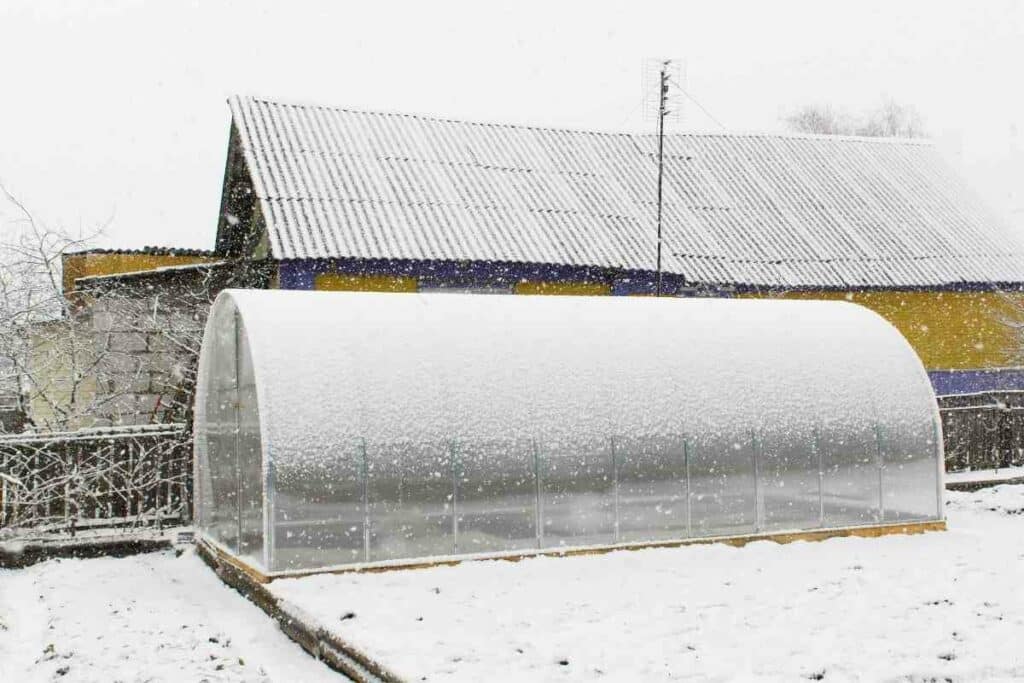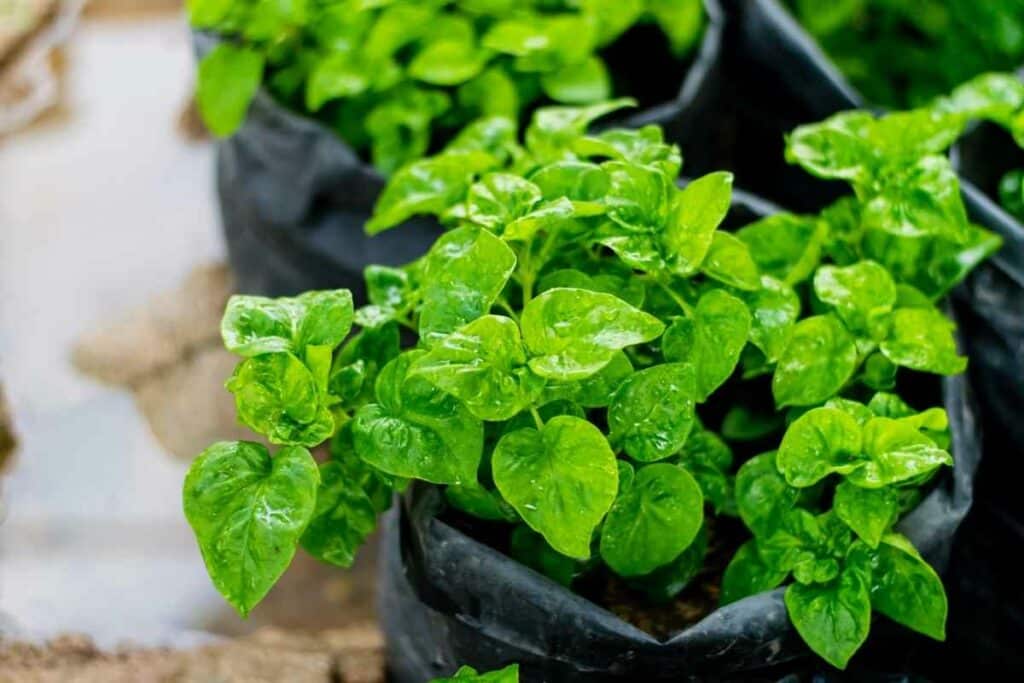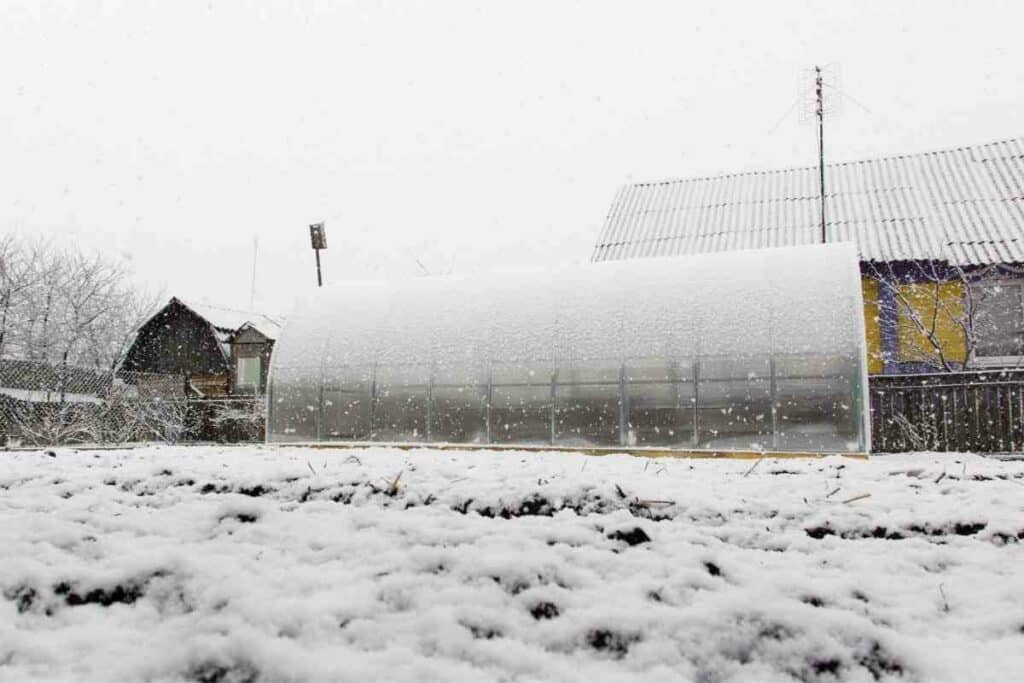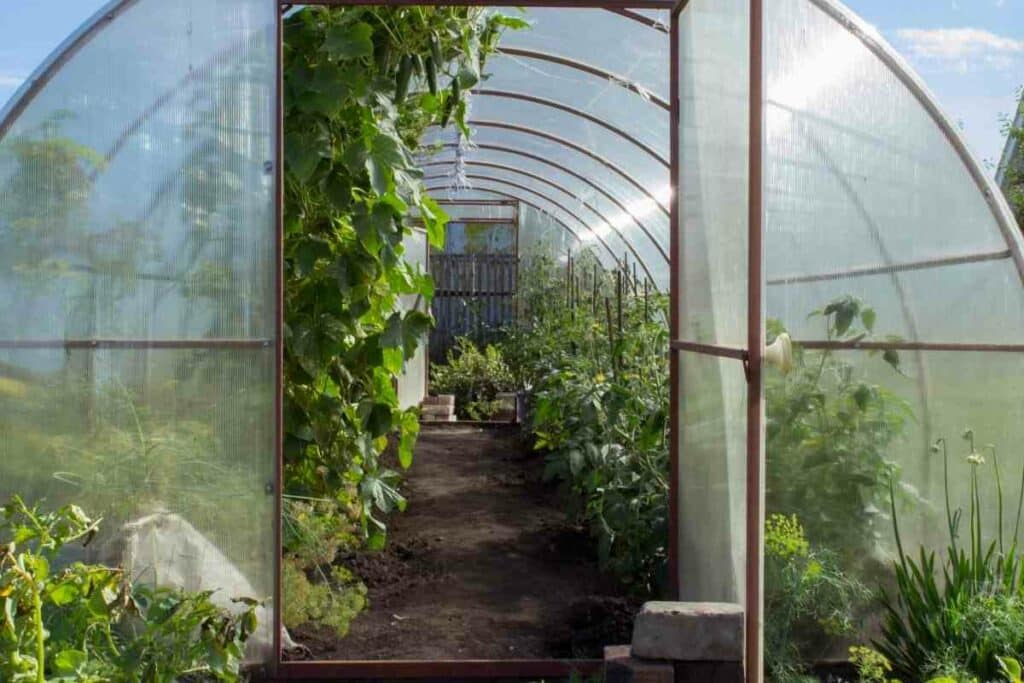Most people think that growing plants is only practicable during summer and spring.
Yes, plants will thrive well in the two seasons, but a greenhouse can allow you to plant vegetables and herbs even during winter.

Some plants do not require a lot of sunlight and can survive the harsh winter conditions as long as they are grown in a temperature-controlled greenhouse.
For Instance – All green vegetables such as cabbage, kales, carrots, and broccoli can thrive in greenhouses.
On the other hand, turnips, beets, and radishes have an increased sugar level in a winter greenhouse.
Also, onions and garlic thrive well and will add flavor to your stews and soups during winter. Herbs such as rosemary, chives, and parsley can be grown in a winter greenhouse.
What To Grow In Greenhouse In Winter
You can grow various plants in a winter greenhouse, depending on what you love to eat.
However, the winter temperatures can affect the variety of plants grown in a winter greenhouse.

If the temperatures fall below freezing points most of the time, you must have a heated greenhouse.
Weather conditions in the USA vary drastically depending on the zone you live. For instance, in Illinois or Iowa which are in zone 5 temperatures can reach -20 degrees F.
If you live in this region and do not have a heated greenhouse, grow hardy plants in cold temperatures.
Crops like winter lettuce, kales, endive, spinach, beets, and carrots will survive in your winter greenhouse.
Those living in zone 1-4, where the temperatures are extremely low, need to grow more hardy plants.

Best examples are scallions, tatsoi, and winter kale. It is essential to read the descriptions on the seed catalog to determine which zones the plant can thrive in during winter.
If you live in temperate zones, you have a wide variety of plants you can plant in your winter greenhouse.
In Zone 7 and Above – The winter temperatures are mild, and most vegetables and herbs will survive and have great yields. Potatoes, kale, spinach, cabbage, Brussel sprouts, broccoli, carrots, onions, and garlic are just a few crops you can grow in your winter greenhouse.
Things To Consider When Putting Up A Winter Greenhouse
There are various factors that you should consider when selecting your winter greenhouse.
The most important one is the cost. Some modern winter greenhouses with mechanized structures are expensive and may not suit your budget.
However, a small winter greenhouse will not cost much, and you can even build it yourself. The main components you need to consider are a transparent cover and a frame.

If you live in an area that experiences storms, heavy winds, or even hurricanes, it will be essential to erect a winter greenhouse that is strong enough to withstand the harsh temperatures.
In This Case – A metal-framed greenhouse will provide the base strength against unpredictable weather conditions.
On the other hand, if you live in regions that experience milder temperatures in winter, even a DIY greenhouse will serve the purpose.
You only need a polyethylene sheet and wood frame to make it yourself.
Consider the climate, size, and site when deciding the type of greenhouse you want in your garden.
In urban developments, most people have limited space and will require a small glass structure that fits the space.
You must work on leveling the ground if your site has a steep slope. Also, select a location that receives adequate sunlight and is not exposed to direct wind.
Lastly, the structure’s integrity must be maintained to ensure the optimal growth of your crops.
When Should You Plant Your Winter Crops?
It is crucial to determine the maturity period of the crops when planning the planting date.
Preferably, you should plant your crops early enough to allow them to mature before the cold weather begins.
When winter sets, the crops will start growing slowly and require greenhouse management.
Therefore, add an extra week or two when determining the planting time to adjust for that.
The winter greenhouse will allow the crops to remain healthy until harvest in winter.
How To Cater For Crops In Winter Greenhouses
The main goal of caring for the crops is to ensure they remain healthy during the onset of winter.

If adequate measures are not taken, the cold temperatures can destroy the leaves and roots of the crops.
The following tasks will ensure the plants in your greenhouse remain healthy:
- The most crucial task is proper watering. It would help if you carefully observed the frequency of watering your vegetables. Reduce the watering frequency as the temperatures start dropping. During this time, your crops will require less water; therefore, you can water them once or twice weekly.
- A healthy crop needs nutrients to develop its roots and stems. If you want your lettuces, kales, or cabbages to produce optimally, fertilizing them is crucial. You can apply either organic or inorganic fertilizers depending on what is available or the deficiency of your soil. Ensure to use a fertilizer that has high levels of Nitrogen and Potassium.
- Proper air circulation is vital for the health of the crops in your winter greenhouse. Therefore during the daytime, especially when the temperatures are warm, open up the vents to let in the air in the greenhouse. Venting reduces condensation and dumpy conditions in the winter greenhouse.
- Ensure to remove any snow that has accumulated around the greenhouse. You can brush it off, ensuring it does not damage the structure’s roof.
Final Words
When planting crops in a winter greenhouse, the options are vast.
If you have a small garden, give it a try. Plant different crops and observe how they cope with the cold temperatures.
However, remember to do some research to find out which crops do well in specific zones or regions.